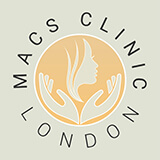
Tuberous (or tubular) breast is a condition that usually develops at puberty, and is characterised by elongated, narrow breasts and a longer skin envelope, causing the breast, areola and nipples to point downward. The areola can be puffy and usually large (see our page on areola reduction surgery). One or both breasts can be affected. Often the breasts are wide apart, forming a very wide cleavage. While tuberous breasts are surprisingly common, they can vary in severity and appearance. Women affected by the condition often reach adulthood before realising that their condition can be successfully treated. It is not uncommon for tuberous breasts to be associated with asymmetry in the size, shape and level of the breasts.
Corrective surgery is performed under general anaesthetic. The base of the breast is widened, natural position of the breast is adjusted on the chest, and the size and volume is increased using an implant. An areola reduction is often carried out simultaneously or as a separate procedure.
Tuberous breasts may require more than one operation or a combination of operations to achieve the desired outcome.
Recovery is usually reasonably straightforward. It is important to follow the advice of your surgeon. You will be given two postoperative appointments, but you are welcome to book further consultations at any time should you wish to.
In the majority of cases the operation is carried out as a day case. However, you should be prepared for the possibility of an overnight stay.
Your stitches will be dissolvable, which means that they will come out after around two weeks. Complications
COMPLICATIONS
-
Complications
As with any surgical procedure, it is important to consider that there is a risk of complications occurring. These include scarring, thickening of scars, pigmentary changes, haematoma, infection, bleeding, wound healing problems, changes in sensation, capsular contracture (scarring around the implant), calcification of the capsule, palpability of the edge of the implant, the implant moving, under or over correction, asymmetry, rupture, removal, replacement and revisional surgery.
WHAT IS THE COST OF THE PROCEDURE?
Tuberous breast correction starts at £5,000


